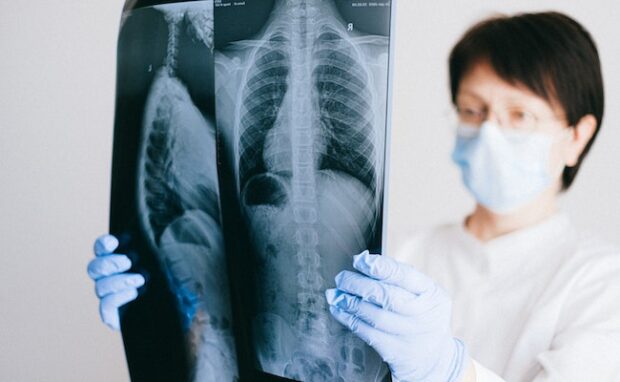Robotic needle shines as medical breakthrough
Researchers from the University of Carolina, Chapel Hill, created a robotic needle that can move through living tissue to reach a specific target inside a human body. Moreover, the scientists tested their technology on a human lung, one of the most challenging organs for surgery. Nevertheless, their technology successfully went through without damaging the organ.
Contrary to popular belief, the latest technologies were not designed to replace medical professionals. Instead, researchers intend to create devices that can enhance their productivity and precision. The robotic needle is a great example of a technology that helps surgeons perform complicated procedures.
This article will discuss how the AI-controlled medical device works. Later, I will cover similar gadgets and programs that assist healthcare professionals.
How does the robotic needle function?

The UNC Chapel Hill website said developing the steerable needle was a multidisciplinary effort involving physicians, computer scientists, and engineers. Computer science professor Ron Alterovitz and his team said it boosts accuracy by taking over human control.
“Commercial medical robots sold today are typically teleoperated, meaning a human is always directly controlling every motion,” said Alterovitz. “By leveraging the power of robotics and AI, we developed a robot capable of autonomously steering needles to targets in living tissue with unprecedented accuracy and safety.”
Needles are essential for directed drug delivery, localized radiation cancer treatment, and biopsies. They are minimally invasive, reducing patient pain and recovery time.
AI makes the robotic needle more accurate than most humans, ensuring the metal doesn’t puncture vital body parts. The best part about this technology is its creators tested it on arguably the most challenging human organ for surgeons: the lungs.
Our air pumps consist of a tightly-compacted mesh of air veins and sacs called bronchi and alveoli, respectively. Moreover, the organ constantly expands and contracts, changing the position of these minuscule parts constantly.
Driving a needle through will likely punch a hole into one of those air vessels. Consequently, the researchers created 3D lung models using a human subject’s thoracic or chest cavity.
Then, they used this simulation to train their AI software. Eventually, it learned how to automatically travel from one point to another in the organ without damaging important structures.
“It’s akin to a self-driving car, but it navigates through lung tissue, avoiding obstacles like significant blood vessels as it travels to its destination.” The UNC Chapel Hill website said the team is improving the robotic needle so it’s ready for clinical use.
What are other medical breakthroughs?

The robotic needle may become part of future medical education soon. Nowadays, medical students train in using robots for procedures. Alisa Coker, director of surgery education at Johns Hopkins, said she conducts 98% of her surgeries with the Da Vinci Surgical System.
The Da Vinci is an 8-foot-tall robot with four surgical arms that insert “straws” into a surgical site. Then, it passes a minuscule camera through to have a closer look at organs during surgery.
“Some residency programs didn’t see the benefit of teaching their surgery residents robotics. But over the last six years, residents started demanding to be taught robotics,” she said.
“They were asking that we prepare a curriculum to teach them,” Coker added. “It was incredible. You have a full 3D view, which is different from any other minimally invasive surgery technique,” said student Alyssa Murillo.
A Trinity Health Oakland surgeon uses augmented reality for procedures. Dr. Safa Kassab uses it for knee replacements because “it’s a game changer.”
AR adds digital interfaces and assets to your surroundings to help you manipulate them in real life. “[The] glasses project an image onto my eye, and it allows me to see angles and measurements in real-time, Kassab said. “But they’re projected on the patient’s bone, therefore, being less invasive and just much more accurate.”
Conclusion
UC Chapel Hill researchers developed a robotic needle that can enter human organs without human intervention. It uses artificial intelligence to maneuver through organs without damaging them.
Soon, it could become a new surgery staple worldwide. After all, you’ve seen above how technology is transforming daily life.
You’ve seen that artificial intelligence is more than just ChatGPT, but what else can it do? Learn more about the latest digital tops and trends at Inquirer Tech.